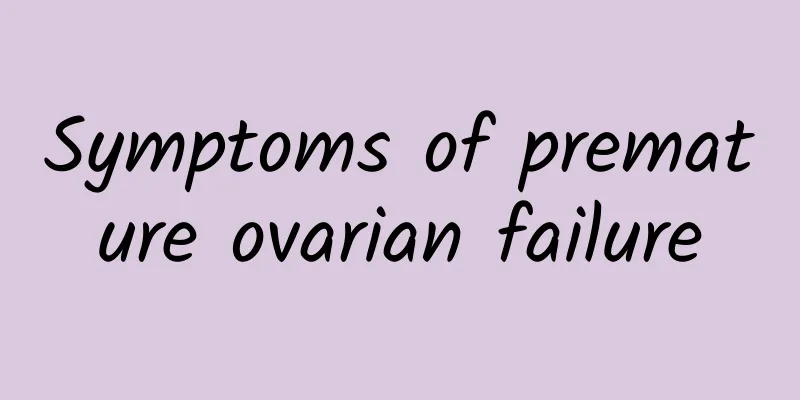Are uterine fibroids serious? What are the dangers?

|
The severity of uterine fibroids varies depending on size, location and symptoms. Most are generally benign, but may cause various health hazards, such as menorrhagia, infertility, pain, etc. It is recommended to choose treatment methods such as medication, surgery or lifestyle intervention according to the specific situation, and manage under the guidance of a doctor. 1. The severity and harm of uterine fibroids Uterine fibroids are a common benign tumor in women. In most cases, they are not serious, but if the fibroids are large, grow rapidly, or are in a special location, they may cause significant symptoms. Common hazards include menstrual abnormalities such as heavy menstruation, prolonged menstruation, lower abdominal lumps or pain, frequent urination, or constipation. These symptoms may affect women's quality of life and may even cause anemia or affect fertility. If fibroids compress the uterus or fallopian tubes, it may increase the risk of infertility or miscarriage. Therefore, if uterine fibroids are found, you should seek medical attention in time to evaluate your condition. 2. Risk factors of uterine fibroids 1. Genetic factors: Women with a family history of uterine fibroids are more likely to get the disease. 2 Hormone levels: Excessive estrogen levels are an important cause of uterine fibroids. Obesity or taking certain hormone drugs will increase the risk. 3 Lifestyle: Long-term stress, unreasonable diet structure and excessive intake of high-fat, high-calorie foods may also be the triggering factors of uterine fibroids. 4 Reproductive status: Women who have not given birth or have delayed childbearing have a higher risk of the disease. 3. Methods for dealing with uterine fibroids 1. Drug treatment: For patients with mild symptoms or in the early stages, mifepristone, GnRH agonists or birth control pills can be used to adjust hormone levels and improve symptoms. 2. Surgical treatment: For patients with obvious symptoms or large fibroids, surgery can be considered. Currently, common methods include hysteroscopy, laparoscopy and traditional laparotomy. The appropriate method is selected according to the location and condition of the fibroids. 3. Lifestyle adjustment: Improve your physical fitness and adjust your diet, such as eating more fiber-rich fruits and vegetables, limiting the intake of high-fat or high-hormone foods, and avoiding excessive obesity. It is also very important to have a regular work and rest schedule and reduce mental stress. Whether uterine fibroids are serious depends on the symptoms and test results. If you have related symptoms or suspect that you have fibroids, you should see a doctor as soon as possible and get a clear treatment plan through professional evaluation. A healthy lifestyle can help reduce the risk of uterine fibroids and improve the progression of the disease. |
<<: Causes of hydatidiform mole
>>: What foods are good for adenomyosis?
Recommend
What are the main symptoms of uterine fibroids? Can uterine fibroids induce malignant tumors?
Uterine fibroids are divided into malignant uteri...
Revelation from Olympic medals! Sarcopenia cannot be ignored
Weightlifting is one of the few sports in Taiwan ...
Practicing yoga can relieve menstrual cramps in women
Yoga is an aerobic exercise that helps you cultiv...
Factors affecting the price of endometrial tuberculosis treatment
The treatment cost of endometrial tuberculosis is...
A brief discussion on the dietary considerations for multiple uterine fibroids
According to recent surveys and studies, the numb...
Early symptoms of vaginitis
Vaginitis causes great psychological pressure on ...
People who are extremely obese should lose weight quickly! Life expectancy may be reduced by up to 8 years
Being fat is not a blessing! It may also shorten ...
Can I go to the hospital alone to get an abortion?
In China, it is technically feasible for a person...
When will menstruation come after an abortion? What if menstruation does not come after one month after an abortion?
When will menstruation come after an abortion? Wh...
Abnormal vaginal discharge Pain in the right lower abdomen
Abnormal vaginal discharge accompanied by right l...
The following are the nursing methods for dysmenorrhea
Women should avoid being bothered by dysmenorrhea...
Can recurrent miscarriage be treated with Chinese medicine?
Physical discomfort symptoms can be treated with ...
Does menopause mean there is no water?
Menopause is a stage in the female physiological ...
The most common symptoms of adnexitis in life
Adnexitis is a type of gynecological inflammation...
What exercises can relieve menstrual cramps?
Many people think that it is inconvenient to move...









